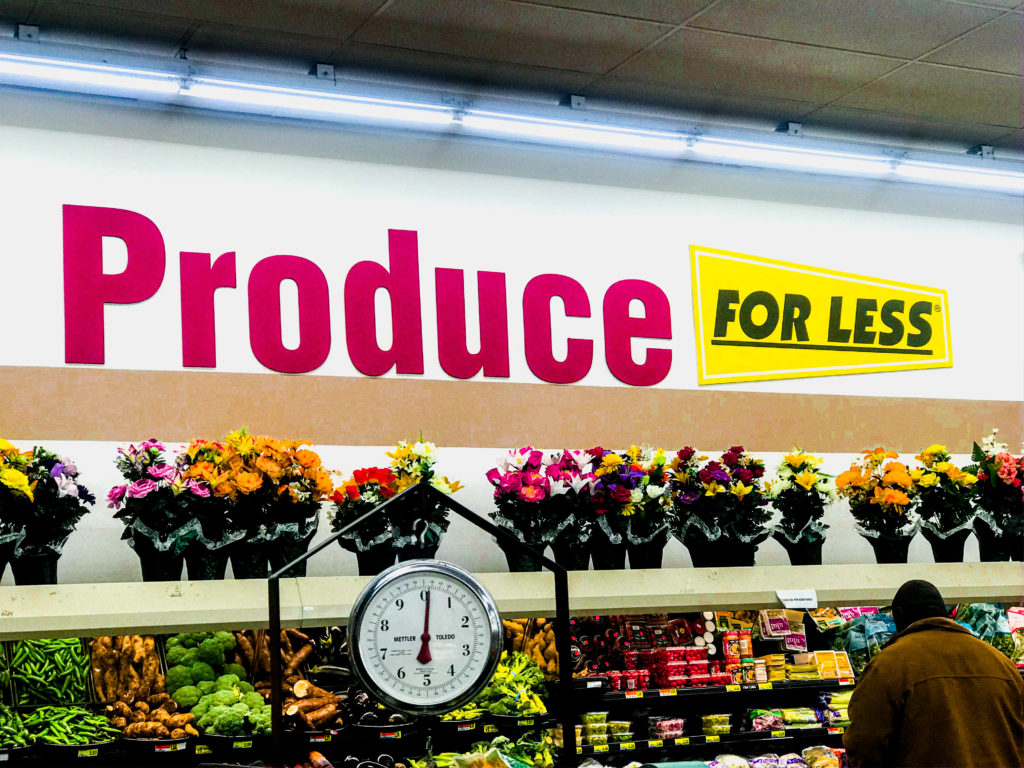Business & Finance | February 20th, 2020
Food Deserts: The National Epidemic
By: Joanne Jean

What do Panera Bread, Chipotle, and Lucky’s Market have in common that contrasts them from Wendy’s, Burger King, McDonald’s and Piggly Wiggly?
These establishments are a clear illustration of the major difference between Tallahassee’s north and south sides, respectively. Tallahassee’s south side is a part of the 19% of neighborhoods in America plagued by the food desert epidemic.
As defined by the United States Department of Agriculture’s (USDA) Economic Research Service (ERS), food deserts are areas where citizens have low income and low access to supermarkets and grocery stores.
Factors of low access include excessive distance or minimal accessibility to transportation. The number of households considered low access in America is 56%. This means half of the nation doesn’t have the same opportunity to acquire healthy food as the other half, which wedges a gap in health. If the closest food readily available is a corner store or a discount grocery store, then there isn’t any contribution to a balanced diet for nearly half of the country.
In 2008, the United States Farm Bill requested that the USDA measure food deserts and discuss its consequences and causes. With this request, the ERS began a report on food accessibility and its relation to income.
“We are a research agency, so we do more on the economic statistical part of the issue. Grocers, researchers, etc. use the info that we have on our food atlas,” said Alana Rhone, an agricultural economist for the USDA ERS.
While the USDA is doing its part to educate and inform the public on the presence of this issue, what else is being done in our government to minimize this problem and its effect?
During the Obama administration, the Department of Agriculture, the Department of Treasury and the Department of Health and Human services collectively started the Healthy Food Financing Initiative to assist citizens struggling with food access through allocating grants to underserved communities that fund the development of more grocery stores and farmers’ markets.
In 2019, Food Nutrition Services launched a digital component to the Supplemental Nutrition Assistance Program (SNAP) that enables members to purchase groceries online with participating grocers like Walmart.
Grocers, on their own part, have also begun to join the movement. In 2019, Dollar General began incorporating a fresh produce section into its stores. The initiative gives customers an option to purchase fresh produce at a discounted price.
Food inequality is also condensed in certain parts of the U.S.
“States in the South have more low income and low access areas/food deserts than other parts of the U.S,” said Rhone.
The community of Tallahassee has been earnestly working over the years to solve this issue locally. A few organizations in the area that are doing their part to ensure citizens gain a healthy diet are the Tallahassee Food Network (TFN) and iGrow.
TFN is a regional coalition that brings citizens around the area together to educate and ensure that regardless of differences everyone has access to good food systems. A component of TFN is iGrow which is a youth organization that promotes healthy eating by giving students the tools to grow food within and for their community. They also ensure these students have the skills to be hired in their industries and empower students to teach others what they learn.
“TFN and iGrow are currently holding cooking classes for students and working with the immigration refugee network with Congolese families so we can learn from them as far as what they want to grow and eat,” said Miaisha Mitchell, Executive Director of the Greater Frenchtown Revitalization Council.
On the common question of whether food deserts are the cities’ problem or solely an issue for the individuals facing it, Rhone believes everyone must be held liable to come to a resolution.
“I don’t think it’s an individual problem, all parties play a component, such as building more grocery stores but with the data present, sometimes proximity is not the issue and income is. So maybe [the solution is] raising the minimum wage or establishing more farmers markets,” said Alana Rhone.
Mitchelle also addresses the correlation between one’s environment, status, and class and how these factors relate to food deserts.
“A lot of times our living conditions contribute to how we view ourselves and this system can cause a mindset of poverty and that makes it seem like it’s the individuals’ fault when it’s a systemic issue. It’s all interconnected and we should make everyone equitable, make it based on what your need is,” said Miaisha Mitchell.
Food inequality goes deeper than just being able to afford and access healthy food. It is a cycle perpetuated by a system that does not support minority communities, leading to a history of health disparities that reflect that.






